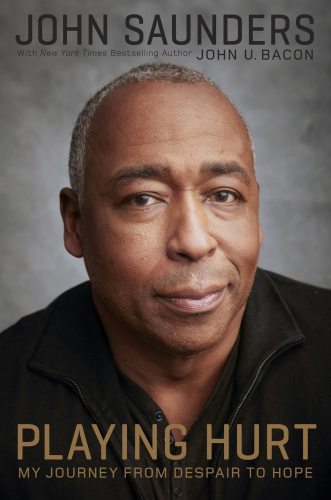
Playing Hurt
My Journey from Despair to Hope
کتاب های مرتبط
- اطلاعات
- نقد و بررسی
- دیدگاه کاربران
نقد و بررسی

June 15, 2017
The late ESPN host and commentator recounts years of struggle with mental illness.Saunders (1955-2016) died of what co-writer Bacon (Endzone: The Rise, Fall, and Return of Michigan Football, 2015, etc.) describes as "a combination of enlarged heart, complications from his diabetes, and dysautonomia, which affects the automatic nervous system that regulates breathing, blood pressure, and heart rate." In other words, he died at 61 of what are generally considered natural causes. The hardships Saunders recounts here are of a more existential nature: abused as a child, he grew up dependent on drugs and alcohol, more than once contemplating suicide: "I preferred fantasizing about dying in spectacular fashion than planning how I might actually do it." Though inclined to self-belittlement rather than self-aggrandizement, he was also a formidable hockey player who didn't mind the brutality of the sport. One key passage describes a series of maneuvers that by all rights should have led to banishment: "to understand a cross-check, imagine gripping a broomstick with your hands about three feet apart, then using the middle portion to smash someone's face while he's skating toward you." Deciding he was better suited to the other side of the glass, Saunders worked his way through the ranks of sports reporting and announcing, beginning with a minor station in New Brunswick and ending up at the pinnacle, ESPN. Even there, he writes, he contemplated leaping from the Tappan Zee bridge and ending his unhappiness. Of as much interest as his difficulties are his efforts to overcome illness, from cognitive therapy to medication and hospitalization; some of it worked, at least for a while, but much did not. Saunders writes without much flair but with plenty of awareness. "Depression allows you to have incredible insights into other people's souls yet still be incapable of transferring those insights to your own situation," he writes--though the chief point of his tale is that insight can come, if at a price. A story that merits both sympathy and attention.
COPYRIGHT(2017) Kirkus Reviews, ALL RIGHTS RESERVED.

July 1, 2017
An excellent athlete in his youth, for the past 25 years ESPN mainstay Saunders (1955-2016) had enjoyed his roles as a journalist and commentator, watching and discussing sports. Then he suffered setbacks, including an accidental fall in the studio that resulted in a traumatic brain injury and a later heart attack. Less obvious but more damaging was the clinical depression that had haunted him since a childhood fraught with abuse, ultimately leading him a few months before his heart attack to peer over the edge of the Tappan Zee Bridge and ponder jumping. This personal account seeks to address his depression in hopes of reaching others, especially African American men like himself who may be hesitant to analyze or discuss their feelings. With the help of counseling and medication, Saunders kept his depression at bay. However, he died shortly after finishing his first draft of this posthumously published memoir. VERDICT For sports fans and anyone who has struggled with depression.--Jim Burns, formerly with Jacksonville P.L., FL
Copyright 2017 Library Journal, LLC Used with permission.

September 1, 2017
Saunders, who passed away at 61 in 2016, was a highly respected ESPN broadcaster who always brought good-humored enthusiasm to his work. So it may come as a surprise to most readers to learn that Saunders battled severe clinical depression most of his life. This moving chronicle of his struggle with the disease was gently revised to include details of his death. As he states early on, he was ashamed he kept his depression hidden and thought telling his story might help others battling the same disease. At various times, Saunders' condition led to suicidal thoughts, self-harm, drug abuse, and troubles with intimacy. Yet he kept going, having a successful career, raising a family, and finding some level of peace. In one of the most harrowing episodes, Saunders recounts his lengthy recovery from cognitive damage incurred after a fainting spell. Readers will ache for him as he struggles to overcome brain trauma while still battling depression. This is a tough read; there's a lot of pain on the pages. But, as Saunders promised in his preface, there's a kind of hope as well.(Reprinted with permission of Booklist, copyright 2017, American Library Association.)

























دیدگاه کاربران